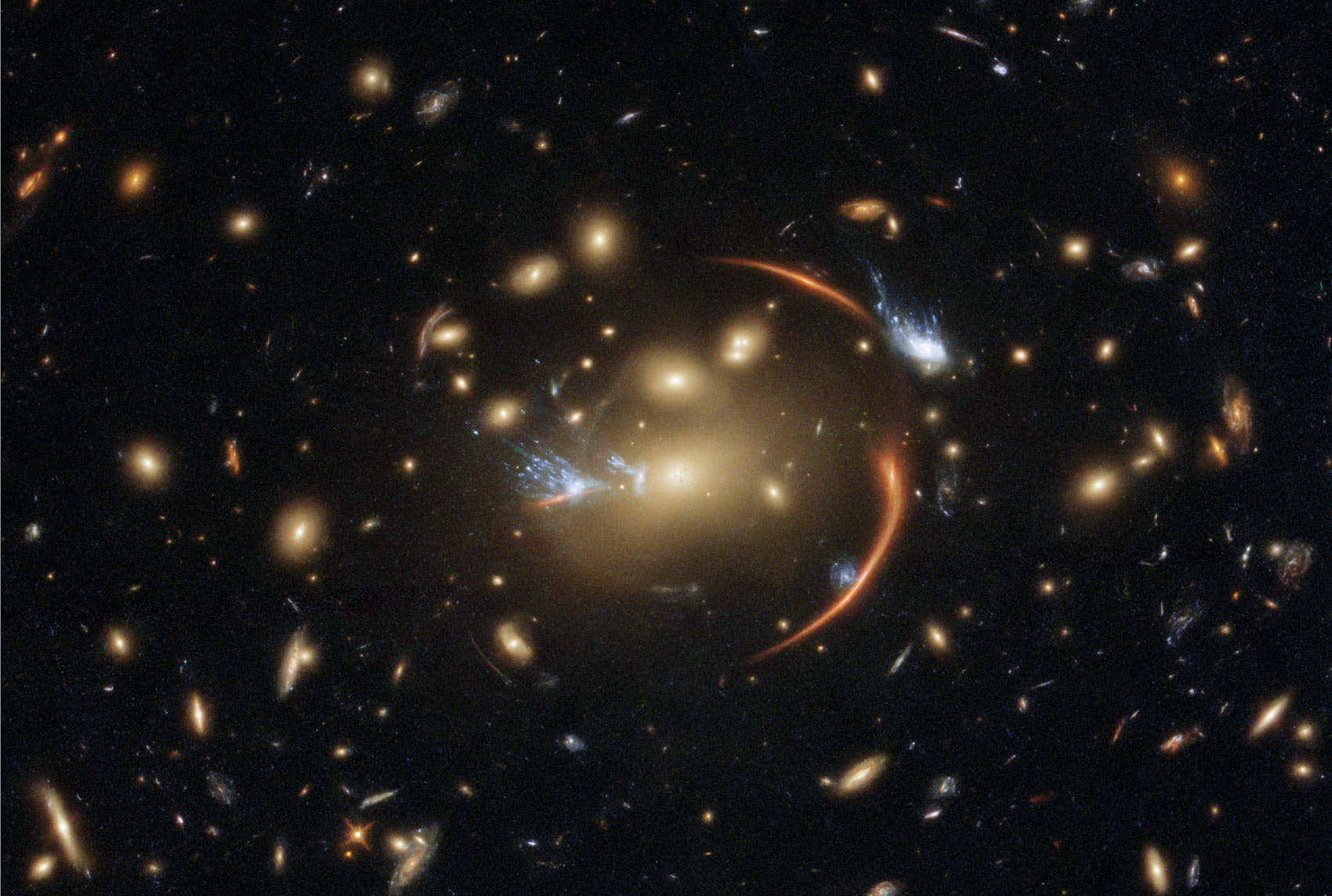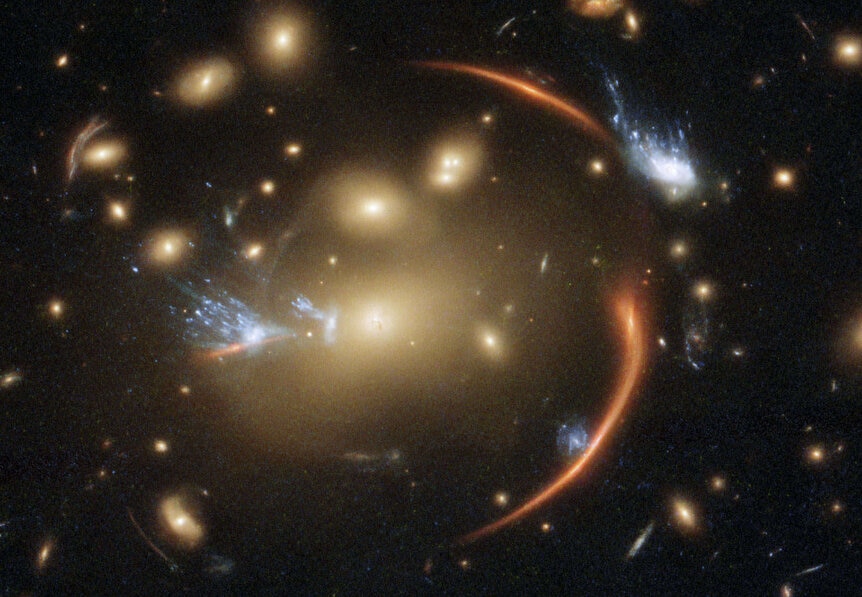Create a free profile to get unlimited access to exclusive videos, sweepstakes, and more!
Magnificent Hubble image of a cluster warping space and stripping gas

The Universe is filled with a lot of weird stuff, but one of the weirdest phenomena is gravitational lensing.
Briefly, gravitational lensing is when the gravity of a massive object — a star, a black hole, a galaxy — bends space around it, causing light passing by to curve, like a car following the curve of a road. Einstein [wrote about this in relation to his work on Relativity], saying that matter bends space and we perceive this bending as gravity. So we call this gravitational lensing; the object bending space is the lens, and the object whose light is distorted the lensed object.
[...]
Nowadays we've seen this effect countless times. It's a little odd; not only can a lensed object's position in the sky be moved around a little by this effect, but it can also be distorted, stretched out like taffy, even wrapped around the lens like a ring (we call those Einstein rings, in fact), and made far brighter by the lens than it would be otherwise.
The most common example we have now is when the enormous mass of a galaxy cluster — which can have hundreds or thousands of galaxies in it — distorts the light from a galaxy behind it.
Hubble Space Telescope observes a lot of these distant clusters, so we see even more distant galaxies all warped and distorted. One such cluster is called MACSJ0138.0-2155, and images taken of it in 2016 and 2019 have been combined to create this barnburner of a lensing field:
Wow! This image shows mostly infrared light from the galaxies in the cluster (shown as a golden glow), plus blue light from a handful of galaxies in the cluster as well (more on them in a sec).
But you can also see several reddish arcs (again, this is infrared light, it's just displayed as red so you can see it more easily) — those are a more distant background galaxy, lensed by the mass of the cluster.
The cluster is about 4 billion light years from us, and the background galaxy is over 10 billion light years away, making it extremely distant. We're seeing it as it was when it was only a couple of billion years old.
Using models of the cluster mass — how the stars and galaxies are distributed in the cluster — the astronomers who took this image can determine more about the lensed galaxy, including the distance. They can tell it's a disk galaxy; flattened, like the Milky Way. It also has a bulge, a central roughly spherical region of stars. The ages of stars and their chemical abundances (how much of various elements they have in them like oxygen, iron, carbon, and more) can also be found, giving a lot of information about its history.
Without the lensing this would be impossible; the galaxy is too small and too far away for even Hubble to see much. The magnifying effect of the lens (both making it bigger and brighter) is what made this possible.
I learned something here too: I've seen a lot of images like this, including ones loaded with these tangential arcs — curved like a circle with its center at the cluster center. But I've never seen one that's radial, that is, pointed directly away from the center. Just left of the cluster center is a straight red streak pointing to about the 8:30 position, just under one of those blue galaxies. This is called a radial arc (even though it's not technically an arc — "arc" in this case is a generic name for any lens-distorted galaxy), and they're more rare than the curved ones. Their existence in an image depends on the detailed distribution of stars and gas in the very center of the cluster.
Note too that there's another weirdly distorted arc at the upper left, just outside one of the cluster galaxies. That's a different background galaxy from the one making the main arcs; you can see more blue in it from bright young stars in the lensed galaxy. Cooooool.
But I have to say, what really caught my eye were the three feathery blue galaxies in this image. I knew right away what they were, but I've never seen them quite like this. They are likely spiral galaxies similar to the Milky Way but moving rapidly through the cluster itself. There's thin gas spread between the galaxies, called the intracluster medium, some of which may be left over from the formation of all those galaxies, or blown out by powerful stellar winds and supernovae in the member galaxies.
As a galaxy moves through the cluster it rams through this gas, and the pressure from its passage can blow out the gas inside the moving galaxy. This is called ram pressure stripping, and it's common in clusters. And in human experience; if you've ever been driving in a car when your dog (or someone else in the car, or, let's be honest, you) has leaked a little gas, what do you do? You open a window and let the wind from your movement blow it out.
Same thing.
These are sometimes delightfully referred to as "jellyfish" galaxies. It's rare to see them in such detail and looking as wispy as seen here, though, with long filaments stretching away. These look to me like Rayleigh-Taylor instabilities, when two fluids (like gas) are in contact, and the less dense one is pushing on the denser one. I've seen a similar phenomenon with clouds here on Earth, once again showing that the physics of what happens deep in the Universe behaves in much the same way it does right on Earth.
Huh. Earlier on I said the Universe is filled with weird stuff. That's very true, and it's literally everywhere... including right here. This image may seem utterly alien and bizarre to you, but the same forces you see sculpting everything in that cluster are at work on Earth and on you, too.
We are a part of the Universe, after all.




























